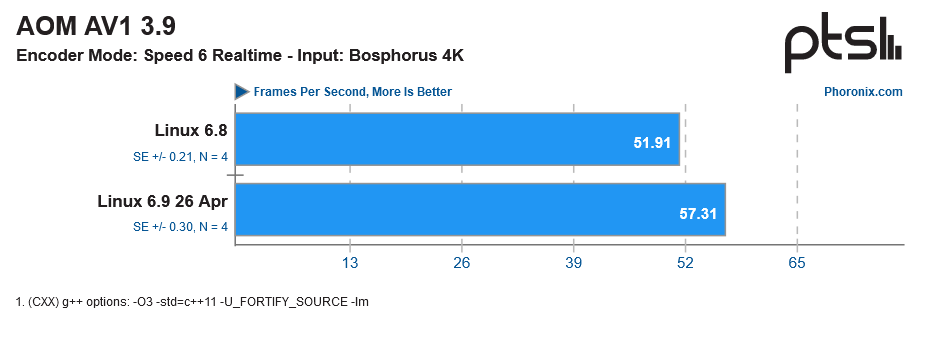
Linux 6.9 is now live, bringing with it a number of improvements including performance enhancements for Intel Core Ultra Meteor Lake processors and AMD Ryzen CPUs (as reported by Phoronix). Regarding the Core Ultra optimizations, Linux 6.9 includes a tuning adjustment to Intel's P-State driver which is claimed to boost performance. Phoronix tested this new tuning adjustment and found it improved performance by 2.6% on average.
The new adjustment applies specifically to Intel's Energy Performance Preference (EPP) system for its Meteor Lake parts. EPP dictates the performance behavior of the CPU and tells it to run in a more power-optimized state, more performance-oriented state, or a balanced state depending on how it is configured. In Linux 6.9, EPP has been updated to feature a balanced performance profile of 115 and a performance EPP of 16, which reportedly improves the chip's performance per watt.


2.6% isn't a huge improvement, but there were a few applications Phoronix discovered that benefit more than others from the EPP changes. In the AV1 encoding tests specifically, Phoronix found that performance improved by nearly 10% with the Linux 6.9 EPP changes compared to Linux 6.8 without the changes. Another set of applications that saw a decent improvement included various code compilation benchmarks, Unvanquished, Xonotic, and FFmpeg which were roughly 6% faster in Linux 6.9.
Phoronix also showed power consumption tests, thermals, and clock speed changes with the new EPP changes. On average, the Linux 6.9 version consumed one additional watt compared to Linux 6.8. Ironically the peak turbo clock went down slightly from 4.885 GHz down to 4.872 GHz, however, the average clock speed went up by a few MHz (from 3.127 GHz to 3.129 GHz). Thermals were virtually identical staying within 87 degrees Celsius average. Testing was done on an Acer laptop sporting a Core Ultra 7 155H 16-core processor.
Linux 6.9 won't make your Core Ultra laptop lightyears faster, but it will provide noticeable performance improvements in some workloads. In fact, we are surprised that some benchmarks improved by up to 10%, given how minor the power and clock speed differences are between Linux 6.9 and 6.8.







